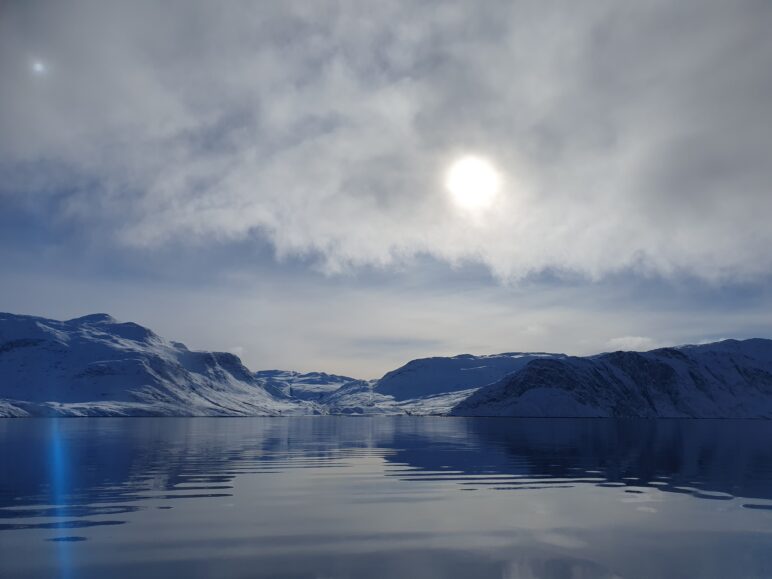Insights into silicon cycling from ice sheet to coastal ocean from isotope geochemistry – Kate Hendry
Glaciers – vast rivers of ice that flow from ice caps and ice sheets – were once thought to be inert environments, too cold for biology or for chemical reactions to occur. In the past two decades, scientists have discovered that glaciers are teeming with diverse microorganisms and are hotspots for biogeochemical weathering—chemical processes that release essential elements into the environment. As glaciers flow, they grind the underlying rock into a fine “flour,” and the unique chemistry of the waters beneath these ice sheets leads to the formation of new, highly reactive materials. This glacial flour can release nutrients into the environment, acting as a significant source of precious elements for coastal marine ecosystems. We are just beginning to unravel the intricate web of interactions among these elements as they travel downstream through fjords and into the ocean.
One key nutrient, is silicon. Every living organism needs silicon in small amounts, but some, like plants and diatoms (a type of algae), need larger quantities to build their silica-based structures. In a new article in Nature Communications Earth & Environment, Kate Hendry and colleagues review the step-changes they’ve made over the last 8 years in our understanding of the importance of glacial flour in the cycling of silicon in polar environments. From studies all around the Arctic and in the Antarctic, they’ve shown that glacial meltwaters are rich in reactive detritus that dissolves, releasing biologically available silicon. This means it could be a vital nutrient source for coastal marine systems deficient in silicon, especially in the Arctic, and potentially on land too, for crops around the world.
Scientists studying silicon now use cutting-edge methods, including measuring the different forms of silicon atoms (or isotopes) released through glacial weathering and in biological and chemical reactions, and using these new data to unpick all the processes that control silicon availability in downstream ecosystems. They have found that this detrital material can reach the open ocean and help feed diatoms in regions of the Arctic.

In their review, Kate’s team also highlight the priorities for this research going forward. There are novel technologies and approaches we can use across environmental science disciplines to address some of the gaps that still exist in our knowledge. New nutrient sensors can be used with autonomous platforms to gather the information we need to understand fjords and coastal regions, which are high variable in space and time. Computational modelling can help us unpick the mechanisms behind these key processes, and (very importantly) get a handle on the rates at which everything happens. All of this will allow us as a community to predict how these sensitive and biologically rich environments will change into the future.
Paper citation: Hendry, K. R., Sales de Freitas, F., Arndt, S., Beaton, A., Friberg, L., Hatton, J. E., … & Woodward, E. M. S. (2025). Insights into silicon cycling from ice sheet to coastal ocean from isotope geochemistry. Nature Communications Earth & Environment, 6(1), 305. https://doi.org/10.1038/s43247-025-02264-7
Short URL to access the paper: https://rdcu.be/eio6y
The author of this article Kate Hendry (British Antarctic Survey)

